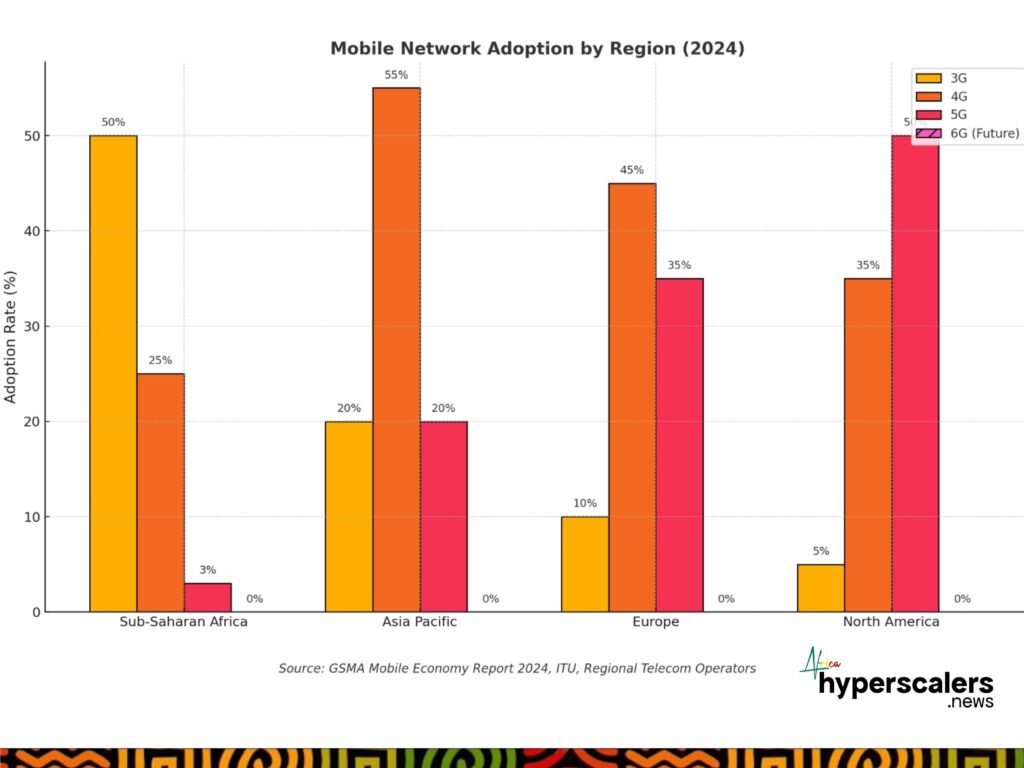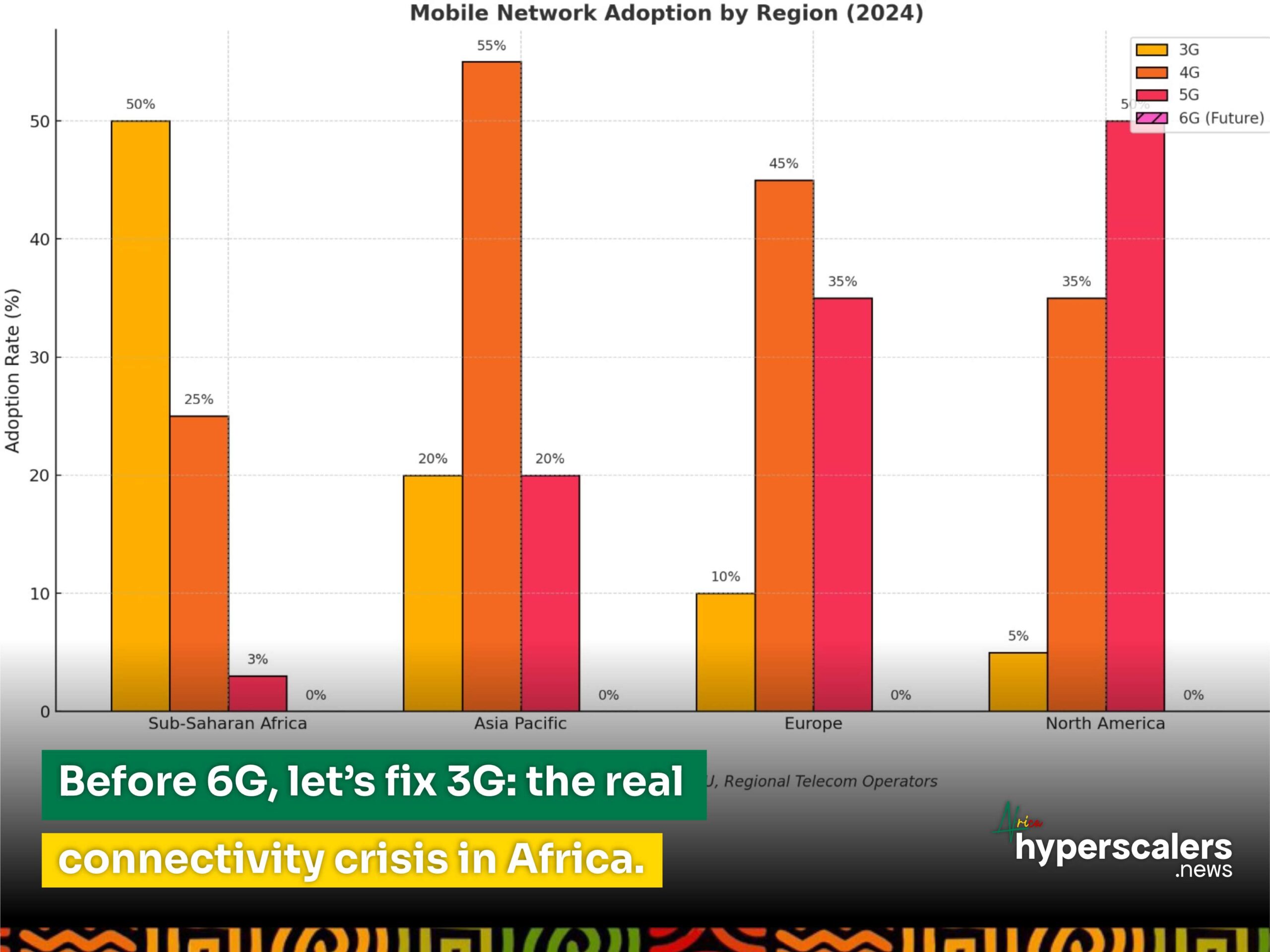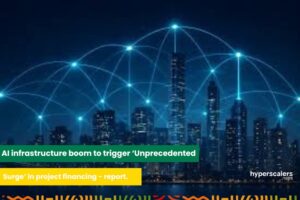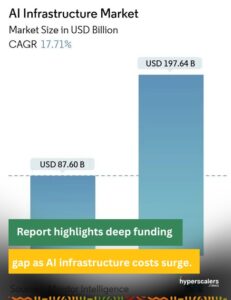It wasn’t that long ago that the telecoms industry heralded 5G as a revolutionary leap forward. Former Qualcomm CEO Steve Mollenkopf famously predicted that 5G would have an impact “similar to the introduction of electricity or the car,” touching every aspect of society and industry. Executives across the sector echoed the sentiment, with promises of autonomous cars, smart cities, and virtual healthcare powered by ultra-fast, ultra-reliable networks.
Fast-forward to 2024, and while over 260 operators have launched 5G in more than 100 countries, the technology has yet to deliver the transformation many envisioned. In most parts of the world, including Africa, 5G adoption has been modest, constrained by high costs, patchy infrastructure, and a lack of compelling use cases for the average consumer. What was once sold as a revolution has, for now, landed as an incremental upgrade.
The African reality check
Nowhere is the underwhelming impact of 5G more evident than in Africa. While operators in South Africa, Nigeria, Kenya, and a few others have launched 5G services, the technology remains out of reach for most of the continent’s population. According to the GSMA, over 50% of mobile users in sub-Saharan Africa are still on 3G networks, and 4G penetration remains below 25% in many markets. Smartphone affordability and device compatibility remain serious barriers.
Even if 5G infrastructure is top-notch and widely available, Temitope Osunrinde, Chief Marketing Officer at West African connectivity startup, Tizeti, believes that wealthy and industrial neighbourhoods might be the only parts of Africa that are ready for 5G. “…But 5G is not a focus for a continent yet to get 3G to everyone in a cost-effective manner.”
Peter Ndegwa, CEO of Safaricom, has also expressed concerns about the practicality of 5G in the African context. He noted that the high cost of 5G-compatible devices remains a significant barrier to widespread adoption. “It doesn’t make economic sense to launch 5G at scale when there aren’t enough capable devices in the market,” Ndegwa said.
The promise and the pivot
The global conversation is now shifting to 6G, with development underway by standards bodies like the 3GPP and ITU. Expected to be 100 times faster than 5G, 6G promises immersive technologies like holographic communication, extended reality (XR), and AI-native networks. But the question remains: what will it mean for Africa if the continent still hasn’t closed the 3G and 4G gap?
“Before we talk about the metaverse, we need to talk about basic mobile broadband,” said Kwaku Safo, a telecom policy analyst based in Accra. “If 6G repeats 5G’s urban-centric, capital-intensive rollout, rural Africa will be left even further behind.”
The issue is not just technological but also economic. Telecom operators in Africa operate on thinner margins than their Western or Asian counterparts, making it difficult to fund the high upfront costs of deploying next-generation infrastructure without regulatory clarity, vendor support, and innovative financing.

A reset for the future
Rather than chase the 6G hype, African countries must reassess their priorities.
Africa’s challenge isn’t 5G, 6G, or hyper-gigabit speeds. It’s far more fundamental. More than 60% of the continent’s population still lacks access to mobile broadband, and over 90% are without fixed internet connectivity, according to data from the International Telecommunication Union. The digital divide is not about the difference between 5G and 6G – it’s about the chasm between those who have basic connectivity and those who have none at all.
In this context, the race to adopt the latest wireless technology risks becoming a distraction. What Africa urgently needs is widespread, affordable internet access – not futuristic upgrades that only a small fraction of the population can benefit from. Bridging the access gap, particularly in rural and low-income communities, should be the cornerstone of the continent’s digital infrastructure strategy.
Compounding this challenge are the high costs of customer premises equipment (CPEs) and mobile devices, exacerbated by persistent foreign exchange shortages that drive up import prices. Low digital literacy rates across large sections of the population make even basic connectivity underutilized. Infrastructure rollouts are further hampered by regulatory inefficiencies, including long approval cycles, multiple taxation by different tiers of government, and unclear right-of-way policies. To overcome these systemic issues, African governments must prioritize policy harmonization, invest in local manufacturing and digital skills training, and incentivize long-term infrastructure investment through tax breaks and streamlined regulation.
Universal access to affordable and reliable broadband, primarily through 4G and fiber, may have more transformative potential in the near term than any futuristic 6G promise. Investment in infrastructure, spectrum policy reforms, and local device manufacturing should take precedence.
Still, the 6G era presents an opportunity – if African voices are at the table early. Inclusion in standards-setting, investment planning, and trials could ensure that Africa helps shape the next wave of connectivity rather than playing catch-up once again.
5G hasn’t lived up to the hype in Africa. In Nigeria alone, operators like Airtel, Mafab, and MTN Nigeria spent over $820 million acquiring 5G licenses, with additional hundreds of millions poured into rollout. Yet, as of December 2024, there were only 4 million 5G connections – just 2.46% of Nigeria’s 164 million mobile subscriptions.
The future shouldn’t be a race to the next G – it should be a race to inclusion. Africa’s digital transformation will not be defined by who gets to 6G first, but by who can bring affordable, reliable connectivity to everyone. The opportunity now is to focus on expanding 4G and fiber access, rethinking infrastructure financing, localizing device manufacturing, and aligning policy with the realities on the ground.
“…Africa doesn’t need to win the race to 5G or 6G. It needs to close the access gap in 3G and 4G first,” Osunrinde noted.
If we want Africa to help shape the future of global connectivity, we must first fix the foundations. Let’s close the access gap – then build forward, together.





